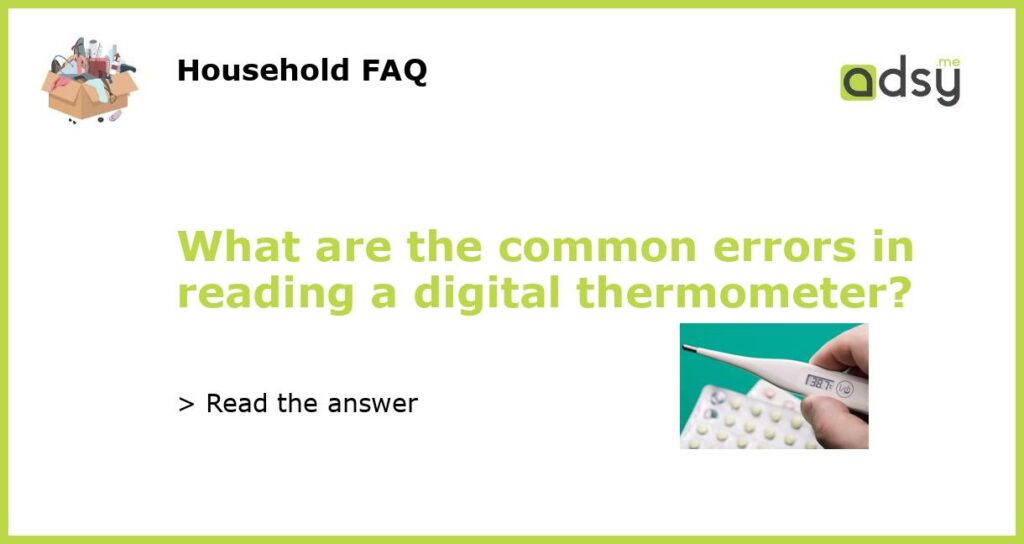Incorrect placement of thermometer
One common error in reading a digital thermometer is placing it incorrectly. It’s important to place the thermometer where it can accurately measure the temperature, such as under the tongue or armpit, in the ear canal, or rectally for infants. If the thermometer is not placed correctly, it could give an inaccurate reading. Make sure to read the instructions on the packaging for correct placement.
Not allowing enough time for reading
Another common error is not allowing enough time for the thermometer to take an accurate reading. Digital thermometers usually take less than a minute to read the temperature, but it’s important to wait until the thermometer beeps or displays the final reading before removing it. Removing it too soon could result in an incorrect reading.
Low battery or malfunctioning thermometer
If the digital thermometer has a low battery or is malfunctioning, it can also give an incorrect reading. It’s important to check the battery or replace it if needed, and to test the thermometer on a known temperature to see if it’s working properly. If it’s malfunctioning, it may need to be replaced.
Interpreting the reading incorrectly
Even if the thermometer is used correctly, it’s possible to misinterpret the reading. For example, a temperature of 98.6°F may be considered normal for adults, but it may be high for infants. It’s important to know the normal range for the age group being measured and to consult with a healthcare professional if the temperature is outside of that range.
User error
The final common error is simply user error. Reading a digital thermometer requires following instructions carefully and being patient. If instructions are not followed or if the thermometer is not used correctly, it could result in an incorrect reading. It’s important to be mindful of these potential errors to ensure an accurate temperature reading.






